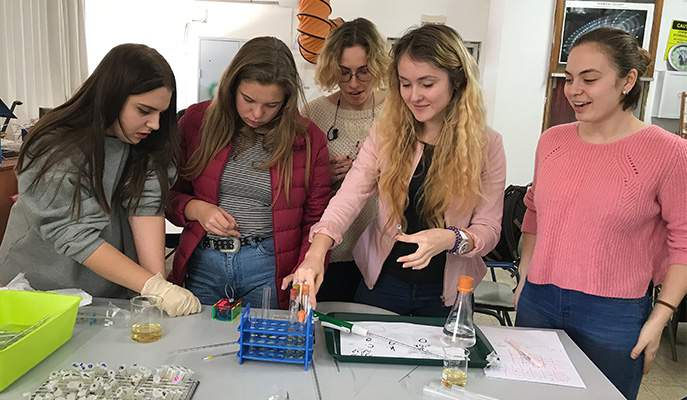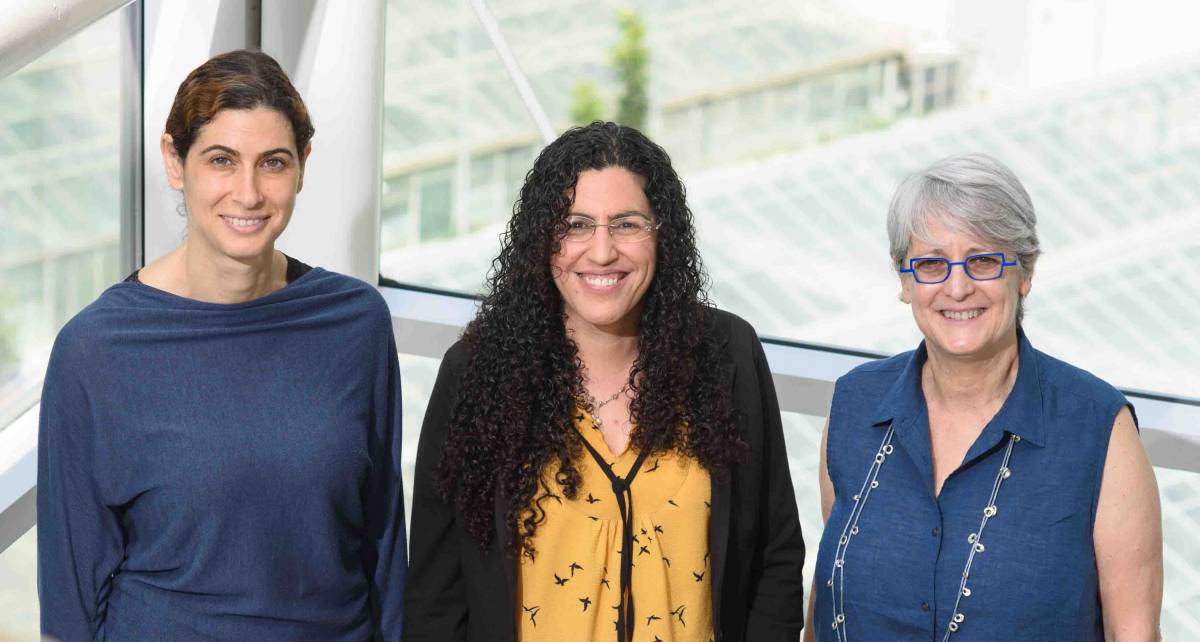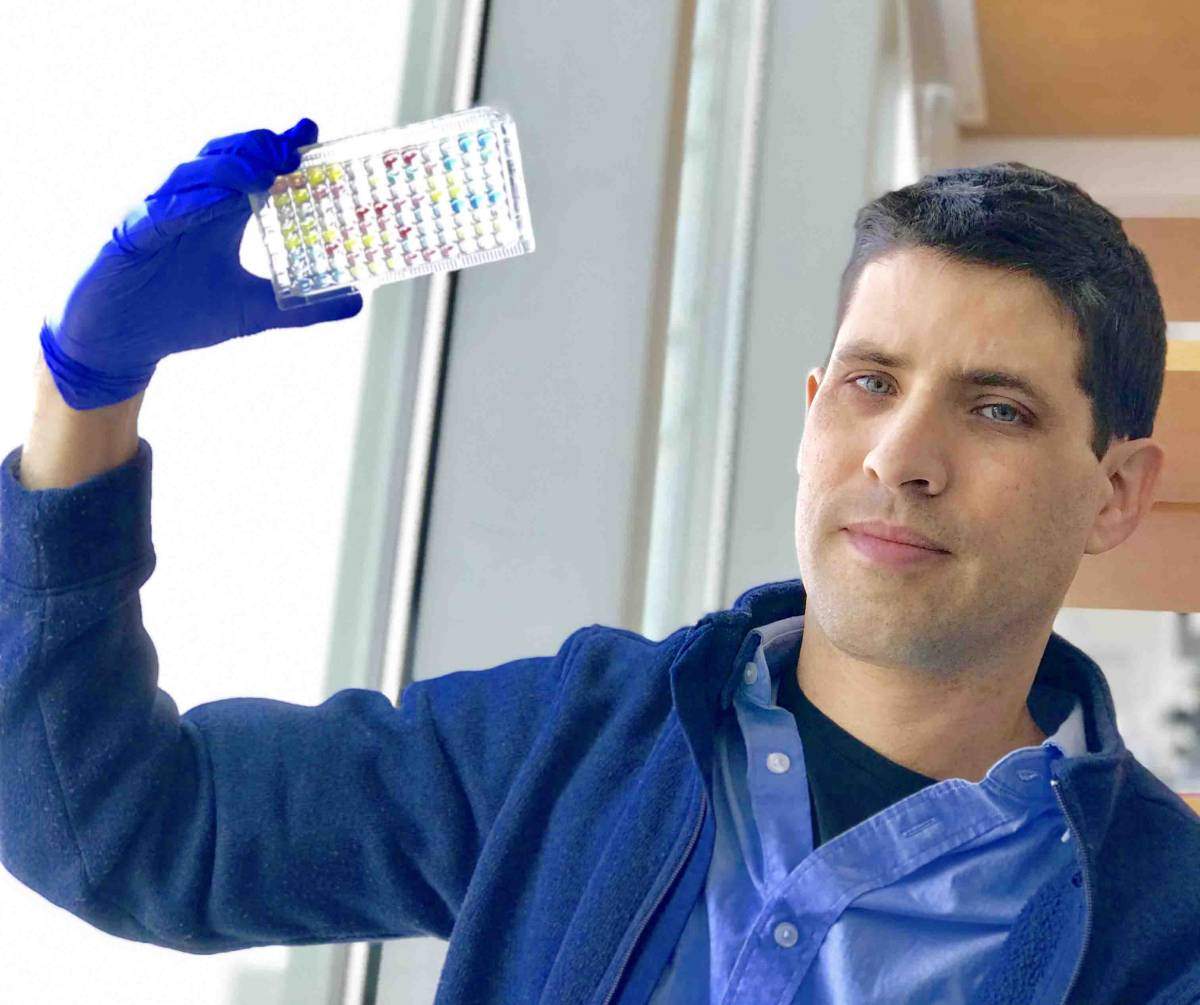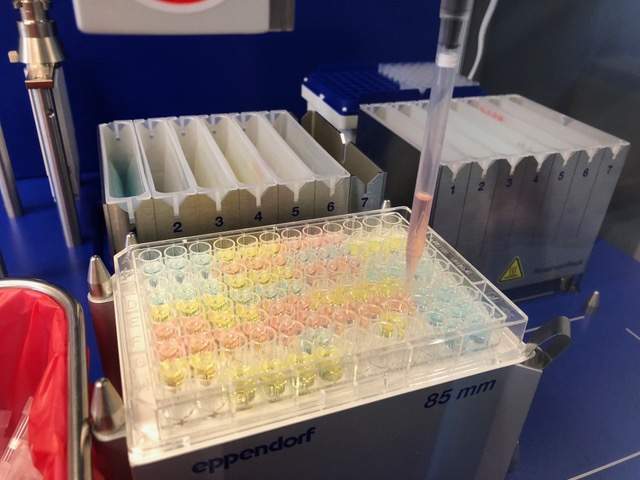Are you a journalist? Please sign up here for our press releases
Subscribe to our monthly newsletter:

One of the biggest challenges to future medicine is the rise of superbugs – bacteria that are resistant to multiple antibiotics. This problem is essentially one of evolution, and a group of high-school students recently had the opportunity to use some of the most advanced techniques used in research labs to investigate how bacteria evolve resistance. Developed by scientists and educators, the program had the teens using a robotic system – an automated setup that enables students anywhere in the world to conduct cutting-edge experiments on evolution in a test tube.
This program was developed in collaboration with Prof. Anat Yarden, Head of the Science Teaching Department at the Weizmann Institute of Science. The project’s initiator, Dr. Amir Mitchell, is a Weizmann Institute alumnus who now heads a research group at the University of Massachusetts, and Dr. Orna Dahan, a staff scientist in the Weizmann Institute group of Prof. Yitzhak Pilpel in the Molecular Genetics Department.

“Participating in the project gave students a taste of the practice of advanced scientific research, granting them access to technology they don’t get in the classroom,” says Yarden. “When students encounter unexpected results in experiments, it deepens their experience and provokes their curiosity.”
“We developed a science education platform in which geographical distance is irrelevant,” adds Mitchell. “High school students from all over the world can do empirical research, direct the process, check results and make new decisions based on those results.”
Some 200 students from Israel and the US participated in the experiments in which, over the course of 10 days, they created evolution in test tubes. The teachers first received preparatory instruction on both the research techniques and on the subject of evolution. Then it was the students’ turn to prepare as they conducted initial experiments in their schools’ science labs.

“The research level of this project was fairly complex,” says Dahan. “It was amazing to see the creativity, time and thought the students put into their work, and the levels of commitment and excitement showed in the lively discussions over the 10 days.”
At the center of the experiment was the research robot. Each class planned their experiment and the robot carried out their instructions from a distance. After the bacteria were grown in a medium, the students exposed them to antibiotics, controlling the types, timing, and concentrations. They had a number of Internet tools at their disposal so they could observe their results in real time and issue new online instructions to the robot. For ongoing discussions, much of it in their free time, the students formed a WhatsApp group. In addition joining a virtual tour of Mitchell’s lab, they consulted with him and with Dahan, who has experience working with a similar robot in her Weizmann Institute research lab.

“The students discovered for themselves how different antibiotic regimens determine how quickly the bacteria develop resistance. They also got a glimpse of the molecular mechanisms that make evolution tick,” says Dahan. “At the end of the experiment, we sequenced a number of genes from the surviving bacteria and the students compared them with the genomes of ‘superbugs,’ so they could double check their results,” adds Mitchell.
Participating in the project were Dr. Bat Shahar Dorfman, who is in Yarden’s group at the Weizmann Institute of Science and Rivka Misgav, a teacher who is student herself in the Rothschild-Weizmann Program for excellence in science teaching at the Institute. Dr. Irit Sadeh, Inspector of Biology Education in Israel’s Ministry of Education Pedagogical Secretariat, oversaw the participation of the six Israeli schools in the program.
Prof. Anat Yarden's research is supported by the estate of Myron H. Ackerman; the estate of Morris Shapiro; and the Maurice and Ilse Katz Center for Science Teaching, which she heads.